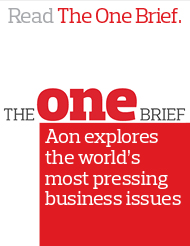Maximising EAP Impact to Mitigate Mental Health Risk
Addressing workforce mental health risk has become a key priority for organisations in APAC. However, without integrating the employee assistance program (EAP) into their overall wellbeing strategy, many may find it challenging to fully leverage this investment.
Snapshot
- For optimal impact, employee assistance programs (EAPs) need to be managed as part of an integrated wellbeing strategy.
- Providing employees with access to coaching services and mental health resources can help address issues like stress, anxiety, and depression.
The Hidden Impact of Mental Health Issues
Mental and emotional health is the top wellbeing issue in APAC according to our latest Global Wellbeing Survey Report. However, only 22% of companies are collecting data, monitoring, or reporting on employees’ mental health1 and ongoing communication and education about emotional wellbeing ranks at number four globally but slips to number nine in APAC.
“Mental health struggles are often overlooked because they are not always visible”, says Susan Fanning, head of wellbeing solutions, Asia Pacific, at Aon. “However, even high-performing employees who appear to have everything under control could be grappling with significant mental health challenges”, she adds. “So, it is essential to measure the impact of mental health issues because, without data, it is impossible to identify the areas that need attention or to track progress over time.
EAPs are often the first step for employees seeking help, particularly for those who have not accessed support for mental or emotional issues before. Therefore, EAPs should not be seen as a compliance measure but as a proactive tool for addressing mental health risk. They provide essential coaching on emotional resilience, helping employees navigate their challenges and fostering a healthier, more supportive workplace environment.
Integrating an EAP into a Holistic Wellbeing Strategy
As Tim Nelson, senior director at TELUS Health, explained in Aon’s recent webinar, “There is no one-size-fits-all solution, so organisations need to provide a variety of services so individuals can choose their own journey.” A robust EAP should cater for different cultural, linguistic, age, life stage and gender needs. Delivery matters, too: hybrid models of digital and in-person support reflect different needs whilst maintaining a uniform commitment to employee wellbeing .
Only 35% of companies include their EAP in employee communication and education initiatives.1
Employee assistance providers must be well informed about all the benefits available to the workforce they serve. Being informed enables them to guide employees to additional company-funded resources, as needed, creating a comprehensive support system. In this context, EAPs become the springboard to targeted care, ensuring employees receive the right support when they need it most, thereby enhancing the perceived value of benefits overall.
Addressing Stigma and Promoting Utilisation
To drive effectiveness, HR leaders need to regularly communicate with employees about the EAP and position the EAP as a vital benefit. Yet data from the Asia Mental Health Index by Aon and TELUS Health reveals a mere 35% of companies in the APAC region include EAPs in their communication and education initiatives.2
Stigma and concerns about the quality of psychological support can also lead to underutilisation of EAPs. To combat these challenges, organisations need to clearly communicate the benefits of the EAP in addressing mental health issues.
- Spotlight the qualifications and experience of the provider’s psychological services team
- Emphasise that seeking help via the EAP is a sign of strength
- Train managers to have mental health conversations
- Ensure senior leaders ‘walk the talk’ by showing vulnerability, and endorsing the EAP
- Use clear and supportive language to make the EAP more accessible
Personalisation and Ease of Use
A well-aligned EAP enhances the employee experience by making support relevant and easy to find, while also surfacing insights about unmet workforce needs that the benefits program could evolve to provide. Organisations can also survey employees or use de-personalised data from health screenings, insurance claims, and leave records to identify emerging risks or trends. Research shows2 there is room for improvement in this area, with only 22% of companies in Asia collecting data, monitoring, or reporting on employees’ mental health.
By collaborating with their EAP provider, HR leaders can develop content that speaks directly to their employees’ challenges, normalising mental health conversations and encouraging help seeking behaviour. This approach not only fosters a supportive work environment but also ensures that employees receive the right support when they need it most.
Monitoring and Enhancing EAP Effectiveness
Effective management of an EAP goes beyond evaluation: it requires annual reviews to ensure market competitiveness and alignment with evolving workforce needs. Organisations should document the impact of their EAP and use data to inform improvements and demonstrate value to employees, thereby building trust and encouraging broader engagement.
Aon’s wellbeing advisory expertise is backed by advanced analytics and uses benchmarking tools to compare the wellbeing strategies of similar organisations versus regional standards. Services range from quantifying the financial cost of not mitigating mental health risk, to wellbeing strategy development, and the identification and management of third-party wellbeing vendors on behalf of clients.
To take the next step towards a healthier, more resilient workforce by optimising your EAP, contact us or watch the webinar video.
This webinar was the third event in our Resilient Conversations series for 2024. View other webinars from the series here.
Source
1Aon’s 2022-2023 Global Wellbeing Survey Report
2Aon, Global Wellbeing Survey Report 2022-23



